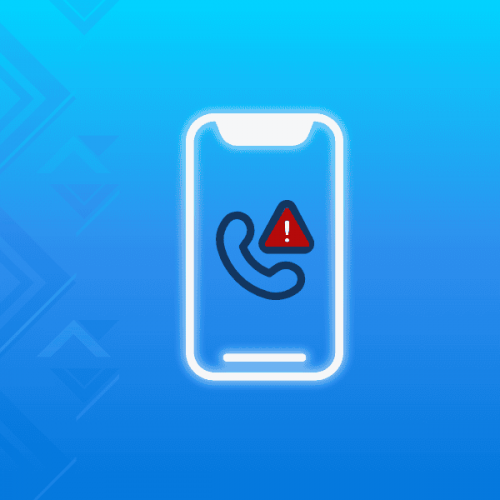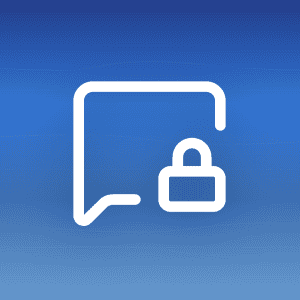Cybercriminals are always looking for new ways to exploit human psychology, and vishing—or voice phishing—is one of their most deceptive tactics.
And with the rise of AI, vishing attacks have become more sophisticated than ever before. To the point where they are almost indistinguishable from legitimate calls.
But how does vishing work, and how can you protect yourself from falling into this trap? In this article, we’ll break down:
- the techniques scammers use for vishing attacks;
- real-world examples of vishing and their associated cost;
- tips to spot a vishing attack when it happens;
- and practical steps to safeguard your sensitive data.
Let’s explore.
What is Vishing?
Let’s start at the beginning and define what vishing actually is.
Vishing is a specific form of social engineering, more especially a phishing attack made over the phone. Like with phishing, the victim is urged to share some confidential information because of a fake excuse created by the scammer.
If you haven’t yet, make sure to check out our guide on phishing attacks. A lot of the techniques described in that article are applicable to vishing attacks too, so we won’t reiterate them here.
However, here’s the TL;DR:
- phishing attacks rely on trust. They want to trick the victim into doing things they would routinely do with a specific organization (click on a link, download a file, etc.) because they trust it and don’t challenge the message’s origin;
- phishing attacks try to get you to either click on a link or open an attachment, leading to spoofed websites or even malware;
- scammers will use urgency (“You must act NOW”) or threats (“Your account will be closed”) to get you to act without thinking;
- they might also lure you with bait (“You have won US$1 million! Click here to claim”) in baiting attacks.
However, in vishing attacks, these tactics are turned up to 11.
Let’s look at a concrete example so you get the idea.
You receive an email purporting to be from your bank, and warning you that “the closing of your Paypal account is imminent. Our records indicate that you have an outstanding balance. Please call our customer support at 00-… to prevent account deletion.”
You call the number and a supposed Paypal agent picks up. They then ask you for your national ID number and credit card number to validate your account ownership. once you provide the information, the line is cut.
Unfortunately, you just provide critical information to scammers you can now use it to empty your bank balance…
Why Are Vishing Attacks So Effective?
There are many reasons why vishing attacks are so successful:
- Right information: attackers already have your name, address, and phone number. Most of this information is already available on the dark web from previous hacks. This makes their approach seem entirely legitimate.
- Urgency: you are made to believe your money or data is in danger and that you have to act quickly. Fear often leads people to act without thinking. This is truer when speaking on the phone to someone when you have even less time to think rationally.
- Phone number looks legitimate: thanks to Caller ID spoofing, the phone number appears as if it’s coming from a trusted institution. This makes it much more likely that you will pick up.
- Thanks to AI, scammers can deploy vishing attacks at scale. They can even impersonate people you know by perfectly replicating their voices (but more on that later).
Vishing attacks are hard to trace because they ‘mostly’ use VoIP (Voice over Internet Protocol). Consequently, this means they start and end a call on a computer that can be located anywhere in the world.
The Rise of AI in Vishing Attacks
Cybercriminals have always adapted their tactics to exploit new technologies, and AI is no different.
In particular, AI is making vishing attacks more sophisticated, convincing, and scalable than ever before.
Deepfakes, speech synthesis, advanced targeting… Let’s explore how AI is making vishing attacks more dangerous than ever before.
Deepfake voices
One of the most alarming uses of AI in vishing attacks is deepfake voice technology.
Cybercriminals can now clone a person’s voice using just a short audio sample, making impersonation fraud more convincing than ever.

The scary part is that scammers don’t need extensive audio samples to replicate one’s voice. Just 3 to 5 minutes of audio is all it takes to create a convincing voice replica. Microsoft even claimed all they needed was 3 seconds of your voice to replicate it.
Using this technology, scammers have successfully mimicked CEOs and even family members to deceive victims into transferring funds or revealing sensitive information.
As the technology advances, it will become harder than ever before to spot real human voices from AI-replicated ones.
AI chatbots
Traditional vishing attacks relied on human scammers, but AI-powered voice bots can now conduct real-time conversations using natural language processing (NLP). These AI-driven systems can dynamically respond to victims, overcoming previous limitations of pre-recorded scam messages.
Attackers use these chatbots to:
- pretend to be bank representatives;
- impersonate tech support agents to steal credentials;
- pose as HR personnel conducting “security verifications”.
Suddenly, this makes vishing attacks much more scalable. No longer do you need a single scammer for each victim: vishing attacks can now be automated at a large scale, targeting thousands of victims simultaneously. This significantly increases their success rates.
Hyper-personalized vishing attacks
Thanks to AI, cybercriminals can now analyze massive amounts of personal data scraped from social media, data breaches, and online interactions.
Your family and friends’ names, where you’ve been on vacation, the bank you use, your pet’s name… All this information is likely freely available with a bit of research. But AI makes this whole process much easier, faster, and cheaper.
Scammers can, therefore, craft highly personalized vishing attacks that are difficult to detect. The context will sound legitimate, increasing the success rate of attacks.
8 Steps to Protect Yourself From Vishing Attacks
All of this might sound scary. How do you know if a call is legitimate anymore? Luckily, there will always be mitigating strategies you can put in place to spot and protect yourself from vishing attacks. Let’s go over them:
- Never give out personal information over the phone. This includes social security numbers, national ID numbers, credit card numbers, login credentials, PIN numbers, etc. Legitimate organizations will never ask for this type of info via phone.
- Never call a number that was given to you by text or email. Take the time to look up the legitimate number (for instance, directly from your bank website) and then call it.
- Feeling suspicious? Just hang up. Nothing bad will ever happen if you take a few hours to investigate the supposedly urgent issue before taking action.
- Limit the amount of information you share online. The more information scammers can gather about you, the more convincing they can make their vishing attacks. When communicating online, prioritize secure channels such as Signal or encrypted emails.
- Establish a safe code or passphrase between you and your friends and family. If you ever get suspicious and suspect you are not truly speaking with them but with an AI replica, ask them for the passphrase. This will ensure you are speaking with a real person.
- Is there a period of silence after you pick up? This is likely part of the reconnaissance phase of a vishing attack. Hang up and block the number from calling you again.
- Be skeptical of any urgent requests, especially financial ones. Nothing is ever urgent to the point where you need to take action within minutes.
- Enable 2FA (2-factor authentication) to prevent any unauthorized access to your accounts.
Real-World Examples of Vishing Attacks
Let’s now look at some real-world cases of vishing attacks, and see what we can learn from them.
The $3 million impersonation scam
In August 2022, a South Korean doctor received a series of phone calls from individuals claiming to be law enforcement officials.
The criminals claimed to be prosecutors having proof that the doctor’s bank accounts were used for money laundering. Unless he cooperated with the investigation, they would arrest him.
They even sent out a fake arrest warrant by text messages, something official law enforcement would never do. Under the pressure of these threats, the doctor ended uptransferring a total of US$ 3 million.
This case highlights the effectiveness of vishing attacks that exploit authority and fear. Individuals should be cautious of unsolicited calls from supposed officials and verify identities through official channels before taking any action.
You can check out this article for more information.
The fake bailout scam
More recently, in January 2025, an elderly couple in Massachusetts fell victim to a fraudulent phone call from a supposed lawyer.
They were falsely informed that a close family member had been arrested, and needed US$ 10,000 for bail. Without verifying the claim, the withdrew the requested amount and handed it to a courrier (who was not actually part of the scam).
It was only later that they discovered that their family member had never been arrested. But by that time, the US$ 10,000 was gone.
Scammers will often use emotional manipulation during vishing attacks to trick their victims into taking immediate action. This case highlights once again the importance of rational thinking, and verifying claims through secondary channels.
Final Thoughts on Vishing Attacks
That’s it for this guide on vishing attacks. Hopefully you found it useful, and will now be able to spot them before falling victims.
If you’re looking to step up your online security, your first step should be to get a private and secure email provider.
Here at Mailfence, we pride ourselves on:
- Advanced security tools: end-to-end encryption, symmetric encryption, digital signatures, and a lot more.
- No tracking or advertising. We do not use any third-party advertising or marketing trackers. We do not track your activity in the application. Mailfence is completely free from ads.
- Strict privacy laws. Mailfence’s servers are based in Belgium, with strong laws protecting privacy. Only a valid Belgian court order can force us to release data.
Interested in taking your privacy and cybersecurity to the next level? Create your free account today!




